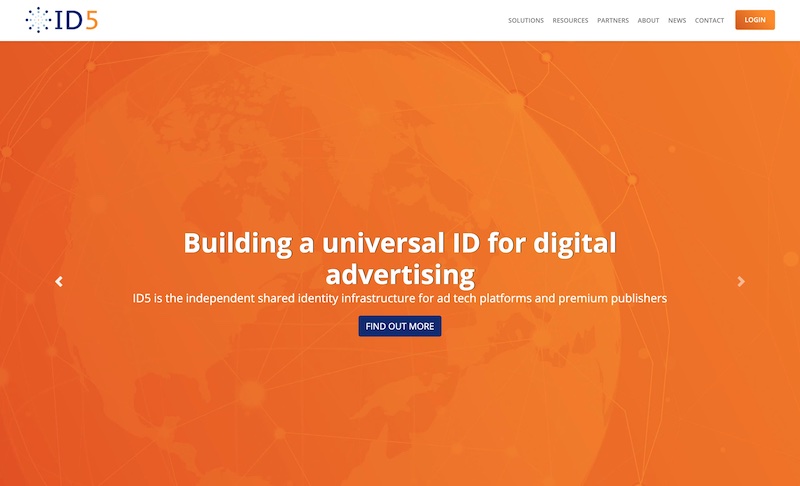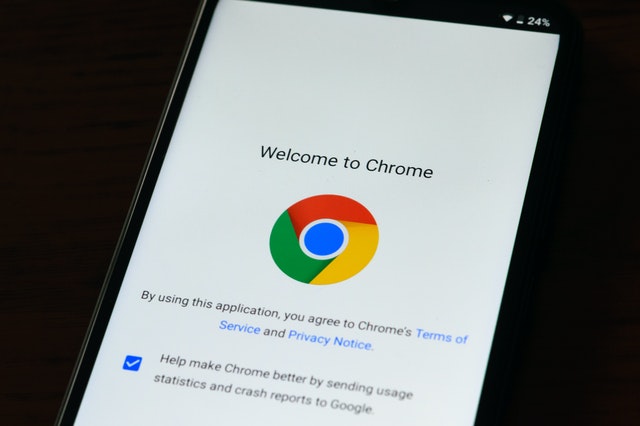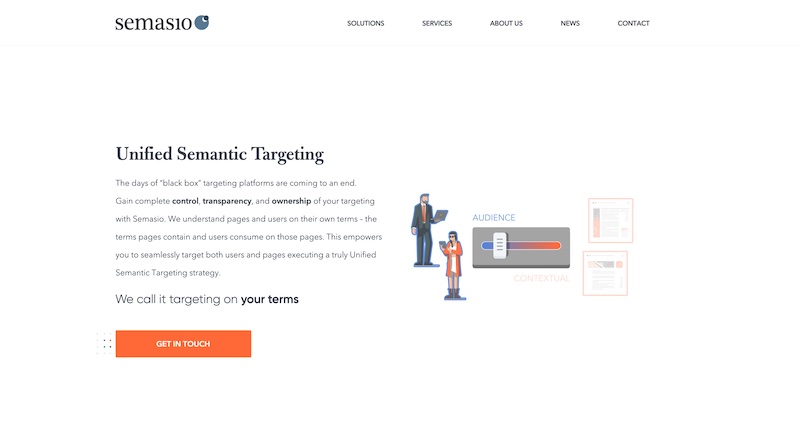Recent IAB research found that publishers could lose up to $10 billion in ad revenue when third party cookies are deprecated. In addition, Google reports that publishers stand to lose 50-70% of their revenue without a new approach to audience data. Alternatives to third party cookies enable advertisers and publishers to target users with ID solutions, cohorts, and contextual targeting instead of third party cookies. In late 2023, quite some time after Firefox and Safari, Chrome will also block third party cookies. Below we analyze the pros and cons of the best alternatives to third party cookies.
Update August 4, 2022:
Google has announced that it will delay the deprecation of third-party cookies in Chrome to the end of 2024.
Why are 3rd party cookies being blocked?
Privacy concerns about how 3rd party cookies collect user data and pass it to 3rd parties have led to action from regulators and web browsers. From 2018, the GDPR regulations have set out rules for explicitly gathering user consent for targeted advertising within the European Union. Similarly, the CCPA regulations in California aim to protect the data of users within the state. The Safari and Firefox browsers have already blocked 3rd party cookies and Chrome will block cookies in 2024. As a result, the advertising industry has been testing alternatives to 3rd party cookies.
If you’d like further information on the history of 3rd party cookie deprecation, check out the IAB’s video here for Project Rearc.
What will happen without third party cookies?
When advertisers can’t identify users they usually bid 50% less. As of December 2020, roughly 30% of users already had a browser that blocks 3rd party cookies. Below is a breakdown of the desktop browser market share from StatCounter.com, a site that uses Snigel’s header bidding stack. A Google study found publishers could lose 50-70% of their revenue with eCPMs 2-3 times lower. As an IAB vendor, Snigel has already implemented a solution to serve ads without user consent or cookies.
The general understanding is that smaller, long-tail publishers do not collect and provide enough data to advertisers to make their ad inventory valuable. Third-party cookies help these sites access more user data which they can then pass on to advertisers. This makes their ad inventory significantly more valuable. Google's FLoC largely aims to replicate this process without using cookies.

What are the best alternatives to third party cookies in 2023?
- Identity solutions
- Google’s Privacy Sandbox
- First party data
- Publisher Provided Identifiers (PPIDs)
- Contextual advertising
- Publisher Provided Signals (PPS)
- Data Pools or Data Clean Rooms
- User Identity Graphs
- Digital Fingerprinting
- Snigel's AdEngine
While all of these solutions can help publishers and advertisers serve more relevant ads to users, there is currently no clear best option from the pack. As a result, it’s best for publishers to spread their risk by adopting all of these solutions and testing to see which ones are most effective with the website’s traffic. Snigel provides access to all of these alternatives to third party cookies through a single solution, AdEngine, our programmatic advertising platform. Contact our team of adops experts to get started.
1) Identity solutions
Identity solutions use personal data such as an email address, phone number, or login ID to track users. When a user visits a website their personal data is collected and sent to an ID provider. From there, the user is matched to an existing ID or a new ID is created and the user's personal information is encrypted or hashed to protect their privacy.
Two primary identifiers are used to create universal IDs:
- 1st-party website cookies
- Permanent user identifiers (email, phone number, user ID, etc...)
An ID created with a permanent user identifier such as an email address is a universal identifier because it can be used across websites, other channels and platforms. This is one advantage identity solutions have over third-party and first-party cookies which can only identify users on the web. As more brands and publishers feed data into the ID solution, this increases the chances of a positive match. As a result, these solutions will become more effective over time.
The main limitation of identity solutions is scale. It requires thousands of publishers and advertisers to systematically collect and share user data. At present, multiple ID solutions are needed to give publishers and advertisers enough data to effectively identify users.
Adform’s latest study shows, despite 75% of companies globally acknowledging that the deprecation of third party cookies will impact their business, over 78% of marketers don't have a tested solution in place. In addition, only 29% globally have adopted a first-party ID solution. In Europe, however, publisher adoption of first-party IDs is nearing third-party cookie volumes. Adform says the introduction of its ID solution is already generating results. The percentage of publishers passing first party IDs is 100% in Denmark, followed closely by 93% in the UK, 90% in Spain, and remaining well above 60% in other European countries. In the US, the number is below 20%.
Snigel’s header bidding solution is integrated with the largest ID solutions on the market. Contact us here if you'd like to access all these solutions in one place through Snigel.

LiveRamp and The Trade Desk Unified ID 2.0
In October 2020, LiveRamp’s Authenticated Traffic Solution (ATS) and IdentityLink ID products were united with The Trade Desk’s ID solution to create ID 2.0. This is a promising development that gives Unified ID 2.0 more scale and therefore more power to identify users and improve ad yield for publishers. Identifying users through email addresses is a core pillar of Unified ID 2.0 because it gives publishers a greater level of independence when web browsers make decisions about tracking.
LiveRamp ATS
Authenticated Traffic Solution (ATS) is a LiveRamp product that helps publishers identify users for targeted advertising that increases CPMs. This solution uses Apple’s Identifier for Advertisers (IDFA), Google’s Advertising ID (AAID), and logged in email to identify users instead of relying on third-party identifiers.

ID5
ID5 provides an independent shared identity infrastructure. They produce deterministic and probabilistic IDs based on the data passed to them by brands and publishers.
What are deterministic IDs?
A deterministic IDs is an ad targeting method that is close to 100% accurate and based on personal data provided by the user. However, since many users don’t provide this data, only around 20% of the global audience is currently able to be matched this way.
What are probabilistic IDs?
A probabilistic ID is a more scalable inferred ID solution based on the user’s device, the time stamp, the url, and the user’s IP address. An ID algorithm uses this data to produce a probability of a correct match. Targeted ads are rendered if it is highly likely that the user has been correctly identified.

2) Google’s Privacy Sandbox
Google’s Privacy Sandbox is the company’s proposed solution to replace third-party cookies with a set of application programming interfaces (APIs). This includes FLoC, SPARROW, Turtledove, FLEDGE, Dovekey, and Topics. Read our full Google Privacy Sandbox guide for more details.
Advertisers will be able to use the APIs to receive data on:
- The prevention of spam, fraud, and DoS
- Conversions
- Ad targeting
- Attribution
- Federated logins
Google’s Privacy Sandbox is still in development and there is no clarity yet on which features will be included and how the platform will be used. Companies can contribute to the project by submitting suggestions that will be reviewed by the W3C consortium. However, many industry experts have criticized this approach as being too narrow and limiting for the replacement of cookies. There are also doubts about the privacy of FLoC, and its testing was postponed in Europe over concerns that it violates GDPR.

3) First party data
Many of these 3rd party cookie alternatives are still being tested and developed. As a result, their future effectiveness is hard to predict. Overall, it’s clear that the ability to gather 1st party data will be critical for publishers to receive higher CPMs. Publishers without a strategy for gathering 1st party data should seriously consider how they could add gated articles, forums, newsletters or other value-added content to entice users to register on their site.
4) Google's Publisher Provided Identifiers (PPIDs)
A PPID is an identifier assigned to a user by a publisher. Publishers typically connect a PPID to a logged-in user. As a result, publisher’s need to consider how to persuade users to log in if they aim to make use of PPIDs.
In November 2021, Google launched new functionality that enabled publishers to share Publisher Provided Identifiers (PPIDs) with demand partners through Ad Manager.
This enables advertisers to deliver personalized ad campaigns in a privacy-first way. The feature allows publishers to build custom audience segments, deliver campaigns via traditional reservations or Programmatic Guaranteed deals, and improve their ad revenue by serving relevant ads to users.
What do the results look like?
“In our initial experiments, we observed that Beta partners experienced an increase of 15% or more in programmatic auction revenue when passing PPIDs in inventory without other identifiers.” – Google.
5) Contextual Targeting
Contextual targeting refers to serving ads based on an analysis of the web page’s contents for keywords and phrases. It does not rely on personal data but may make use of data passed across by the publisher such as the device and time of browsing. Advertisers use machine learning to predict which pages are best to target and when to target them.
For example, a user visits a soccer game recap on sports.com. Advertisers can analyse the site and determine it is related to soccer. As a result, soccer brands like Addidas might bid to have their ads displayed next to the relevant soccer content.
Contextual advertising is most effective when the publisher has highly themed content that attracts users with a specific interest. For example, a publisher that focuses on only online gamers. In addition, contextual targeting is a good fallback for advertising when users do not give consent for tracking through a CMP or other registration strategies.
The major weakness of contextual advertising is the limited targeting options. It does not identify specific users or the demographic characteristics of users in general. It is also is less effective for advertisers with broad, diverse audiences.

Criteo
Display ad company, Criteo, has built a contextual advertising product that uses AI to combine content classification with first-party transaction data to better connect consumer purchases with the content they consume.

Semasio
Semasio uses Natural Language Processing (NLP) to analyze pages and identify significant terms and phrases. These terms are used to create a Semantic Page Profile which is added to a Semantic User Profile every time the user visits a new page. As the Semantic User profile gets built out, the ad targeting will become more accurate.
6) Publisher Provided Signals (PPS)
Google's Publisher Provided Signals (PPS) is a beta feature in Ad Manager that enables publishers to utilize first-party and contextual data for programmatic monetization during auctions. PPS allows publishers to categorize their data into audience or contextual segments, making it more accessible to buyers while maintaining privacy and preventing data leakage.
Targeting is based on demographics, interests, or purchase intent across various sites and apps without tracking user activities. This is achieved by incorporating taxonomy segment IDs in bid requests sent to Google Demand bidders, allowing for direct integration of unique first-party data in the auction process.
PPS offers several benefits to publishers, such as:
- seamless integration
- enhanced privacy
- reduced data leakage concerns
- improved discoverability of audience attributes,
- increased inventory value across apps and OTT/CTV environments
As an effective third-party cookie alternative, PPS enables publishers to share their first-party data with buyers while adhering to increasing privacy regulations.
7) Data Pools or Data Clean Rooms
Data pools or data clean rooms are a repository for storing large amounts of user data. These entities are independent from publishers and advertisers to ensure user privacy is protected. Publishers can upload or match first party data from their side. Advertisers can do the same from the other side.
As a result, advertisers can get insights about their audience from the publishers and activate targeted ads.
Similar to ID solutions, the downside of this solution is that it requires scale. The data clean room needs to have tens of millions of entries in order to have a good chance of matching a specific user. This means many publishers and advertisers need to coordinate to share user data. In addition, the data pool entity needs to be a trusted, unbiased intermediary, which upholds privacy laws locally and abroad.
8) User Identity Graphs
This solution combines Personally Identifiable Information (PII) such as an email address with non-PII like 1st-party cookies and publisher IDs.
The main advantage of user identity graphs is they enable cross-channel and cross-platform tracking and targeting. The disadvantage is user identity graphs are hard to develop and deploy without accidentally compromising privacy. To ensure user data safety, it is best to use a trusted vendor that specialises in this area. Amazon's Neptune is one worth exploring.

Amazon Neptune
9) Digital Fingerprinting
Digital fingerprinting identifies users by gathering pieces of information about their device to create a unique "fingerprint". The two main forms of digital fingerprinting are browser fingerprinting and device fingerprinting. Browser fingerprinting gathers information from the user's browser as the user surfs the web. Device fingerprinting gathers information through 3rd party apps the users has installed on their device. In most cases, fingerprinting is performed by a third-party as opposed to the website or app the user is engaging with. As an individual uses their device, this third-party fingerprint may be loaded on many apps and sites to track the user across channels.
Digital fingerprinting identifies users by recoding their:
- IP
- Plugins
- Operating system
- Browser
- Screen size
- Time zone
Since fingerprinting can be done without storing data on the client's device or browser, it is very difficult to detect or block. As a result, there may be privacy concerns with this form of tracking and it may prove controversial in future. Most browsers have announced they will limit the ability of websites to fingerprint users in future.
In contrast, first-party cookies require storage access. Regulators are increasingly pushing companies to get explicit consent before using any type of cookie.
The main advantage of digital fingerprinting is the ability to gather data on the daily activities of the user. This gives advertisers rich, specific information about what a user is interested in and where they are using their device. In addition, fingerprinting can be used to track users across platforms and websites as long as they use the same browser/device.
Ultimately it looks like digital fingerprinting will not be a long-term solution. The ad tech industry and regulators are continuing to move away from tracking without user consent.
10) Snigel's AdEngine
Snigel’s header bidding solution (AdEngine) is already integrated with ID solutions, fingerprinting, Google's Privacy Sandbox, and contextual advertising. Our goal is to ensure publishers avoid revenue loss when third party cookies are deprecated in 2024. AdEngine includes:
- LiveRamp and The Trade Desk’s Unified ID 2.0
- ID5
- IdentityLink
- PubcommonID
- UnifiedID
- Criteo
Contact us here if you'd like to access all these solutions in one place through Snigel.
Which alternatives to third party cookies will work best?
- Use a diversified approach (first-party data, identity solutions, contextual targeting etc...)
- Combine and pool data sets with other publishers
- Gather first party data
- Use contextual targeting as a backup
Use a diversified approach
Identity solutions, contextual targeting and Google’s Privacy Sandbox are promising third party cookie alternatives. However, a clear winner has yet to emerge. To avoid a decline in revenue, it’s best for publishers to start experimenting with these solutions before third party cookies are blocked by Chrome in late 2024. As an ad tech provider and header bidding company, Snigel has been perfecting its integration with these solutions since 2019. Our partner websites are already able to make use of this technology through AdEngine, our header bidding solution.
Combine and pool data sets with other publishers
Smaller publishers should consider combining their data with other publishers so advertisers can buy their audience data at scale. Ultimately, there is nothing to stop publishers from creating their own walled gardens. A rich database of first-party data can drive behavioural and contextual targeting in a future without third-party cookies. Look to companies like ozoneproject.com in the UK for inspiration. The Ozone Project is owned and operated by a group of UK news publishers. They've built an advertising and audience platform to provide an editorially-governed, GDPR-compliant platform for premium websites.
First-party data
Gathering first-party data is key for publishers to control their own future. This is the one premise that the majority of ad tech participants agree on, from advertisers to website owners.
Contextual
While firstparty data is the gold standard to enable behavioral targeting, it is often not possible to scale this for all users. By adding contextual targeting, you can improve the revenue generated from users that cannot be matched to first-party data.
If you’d like to find out how we can help your website prepare for a future without 3rd party cookies, contact us here.









